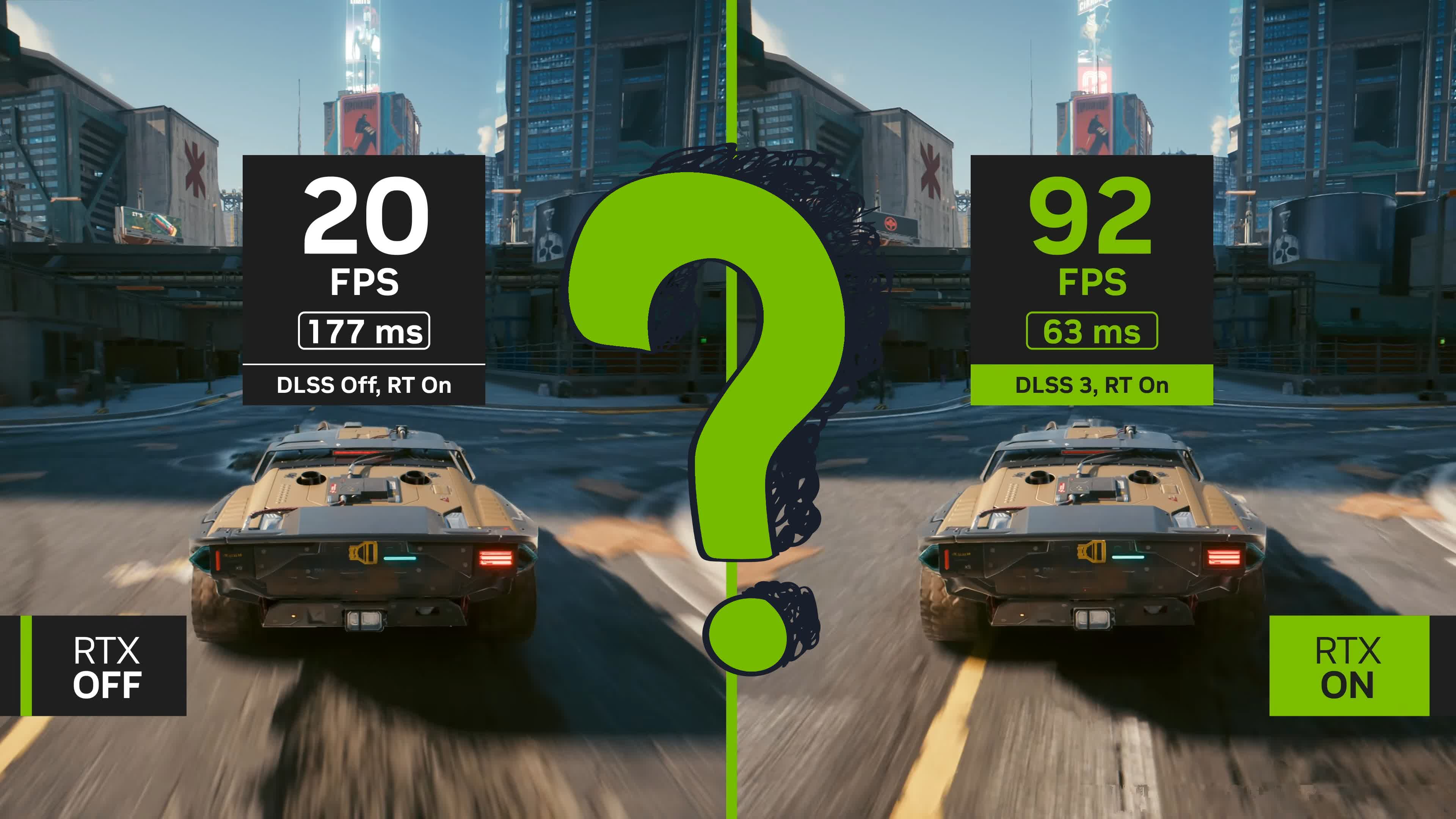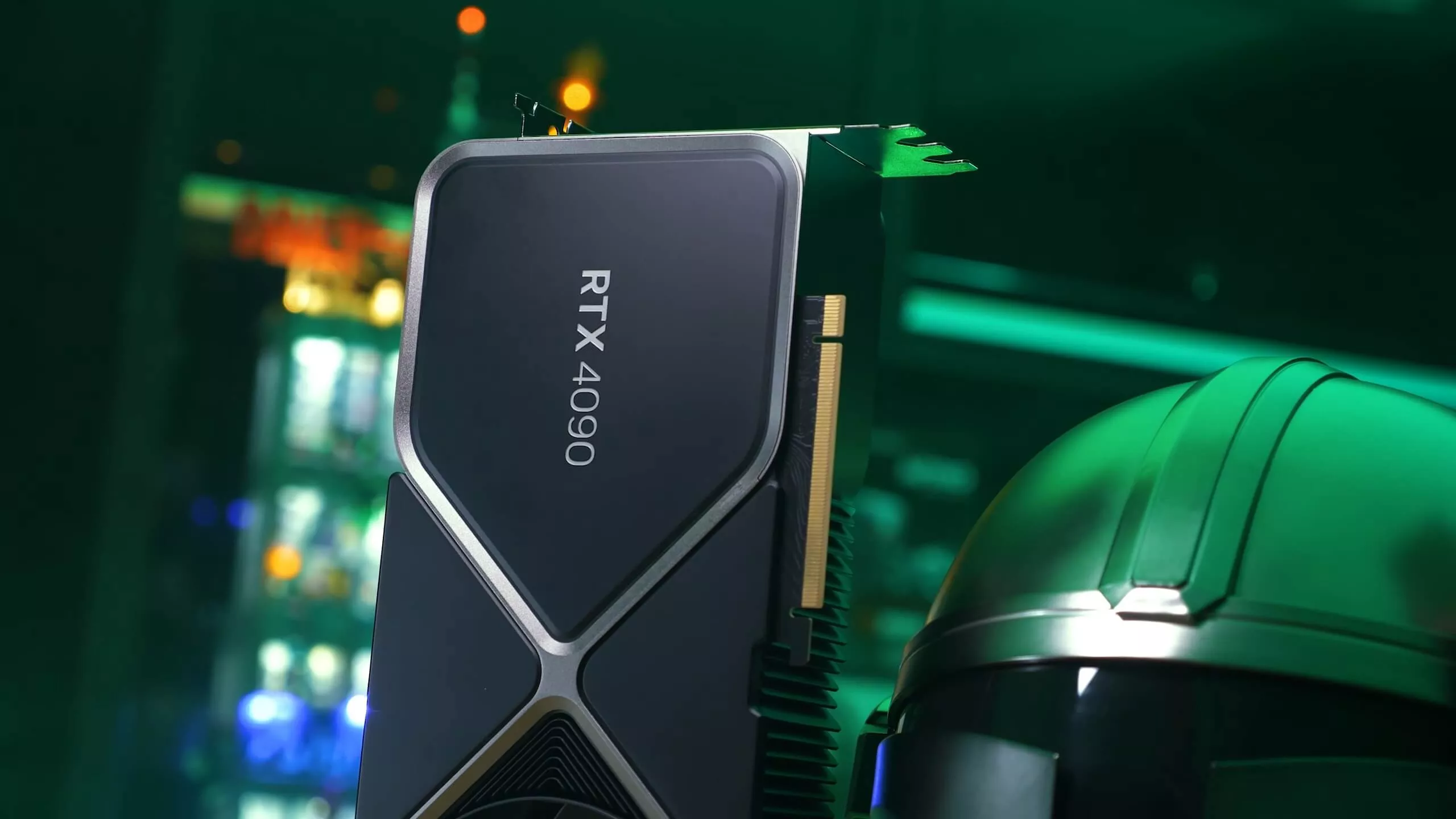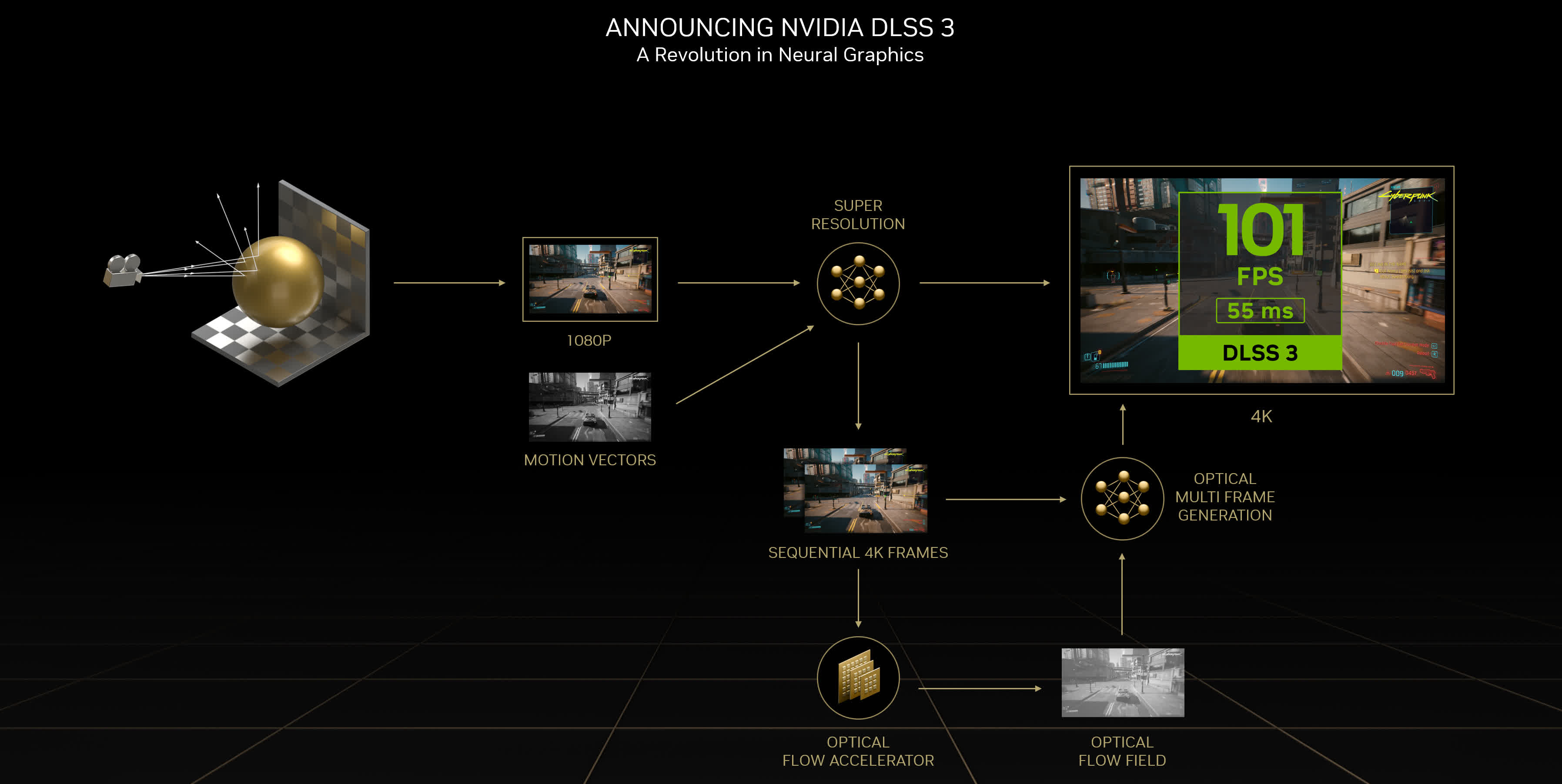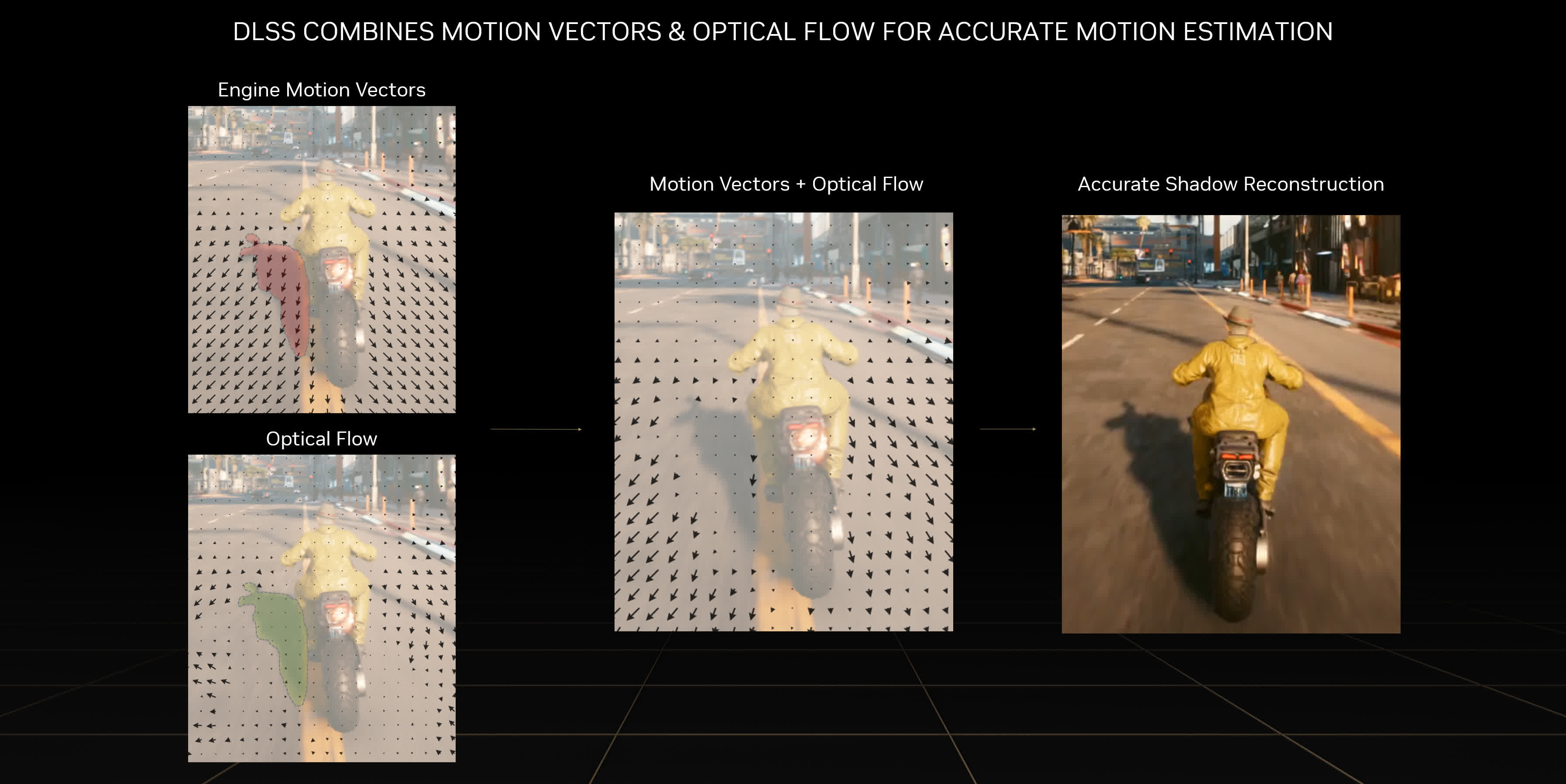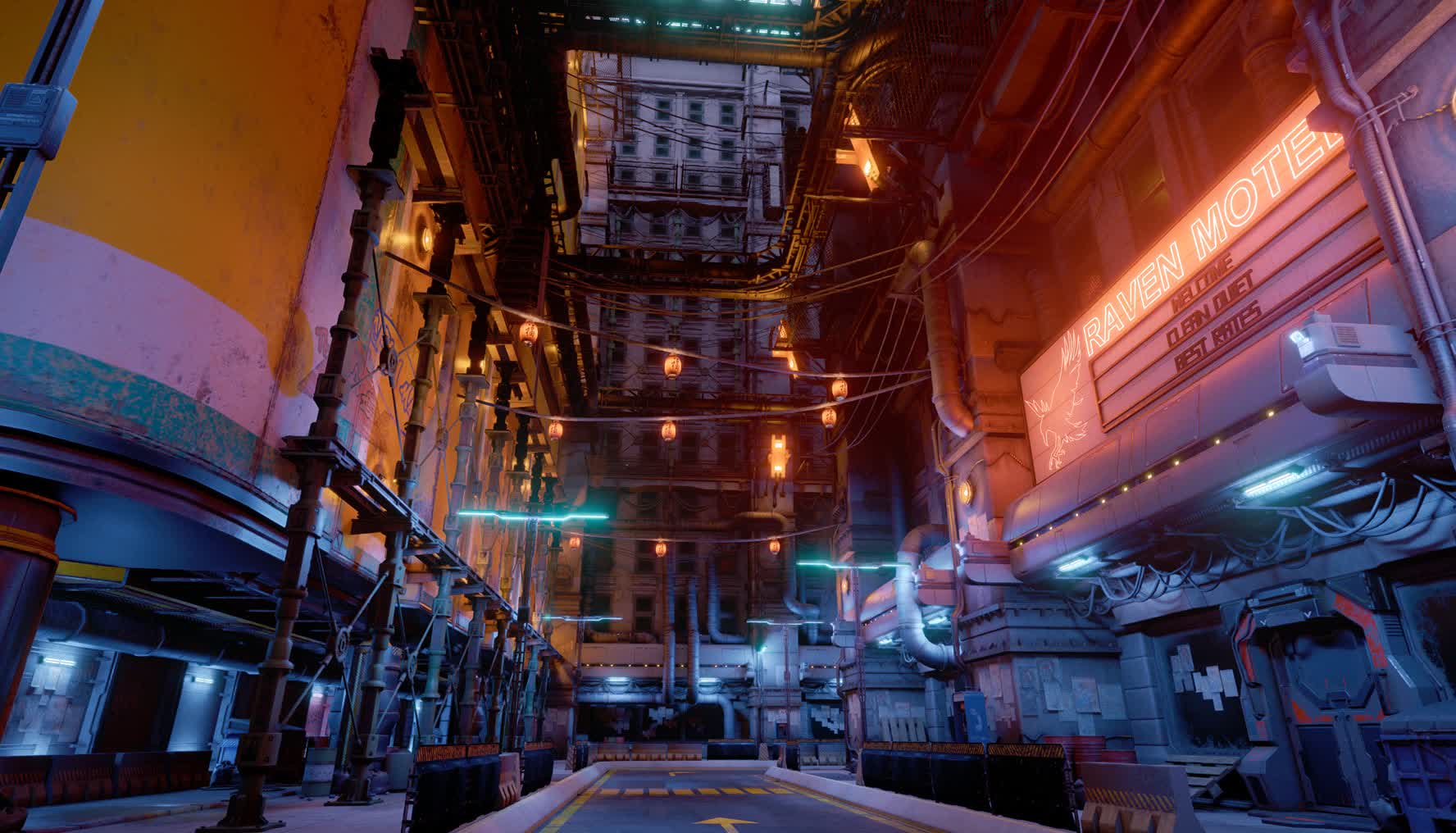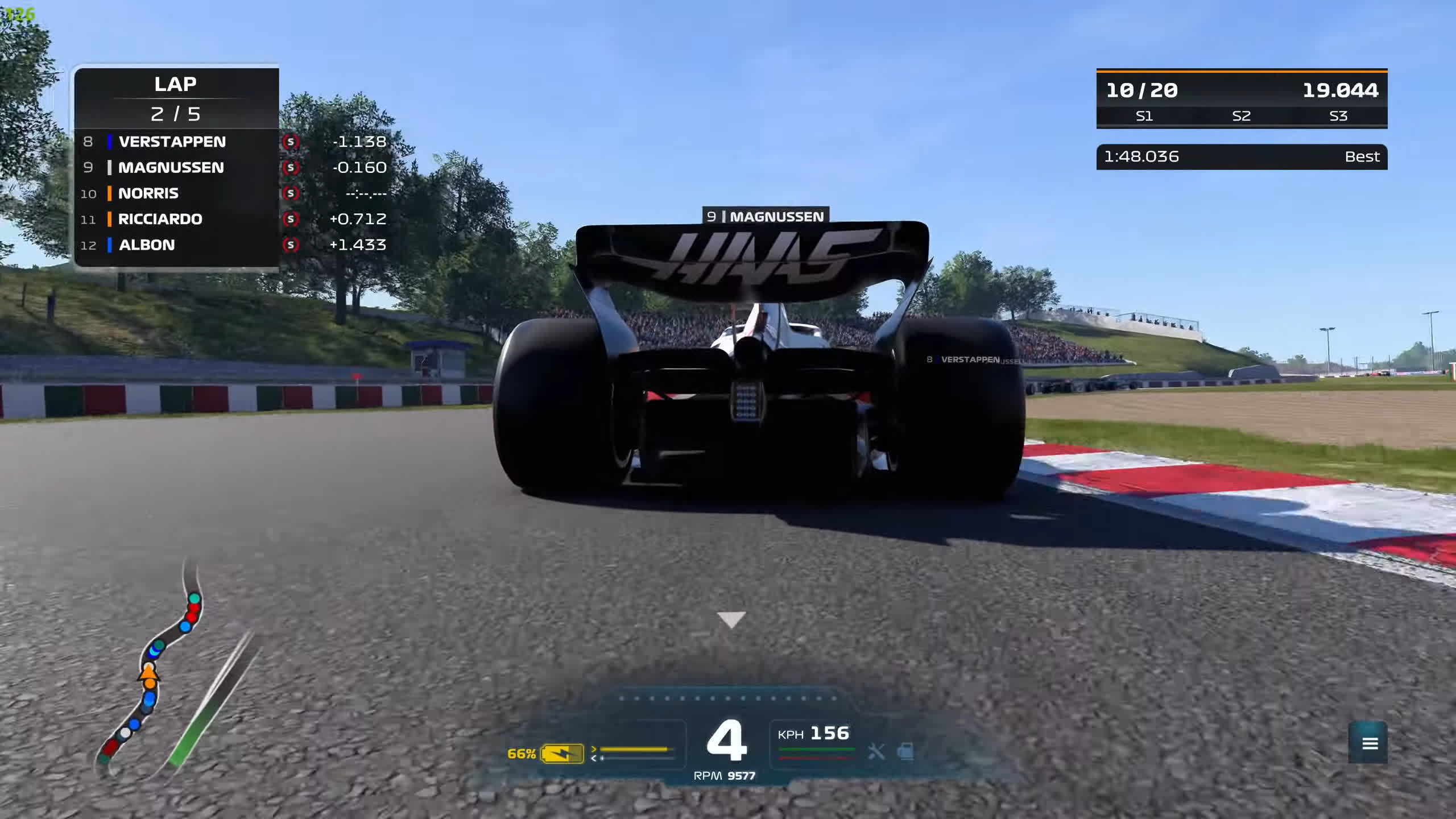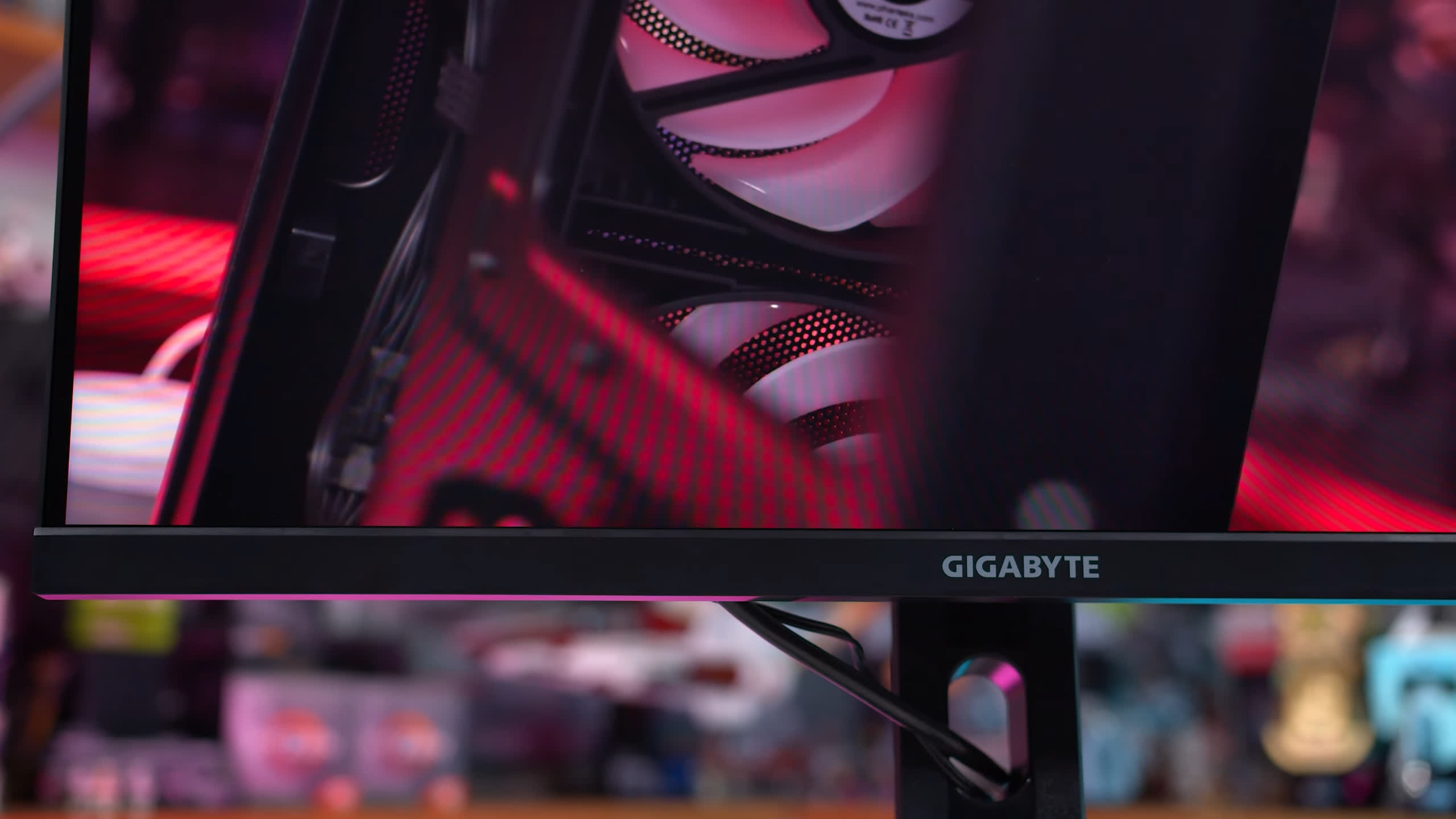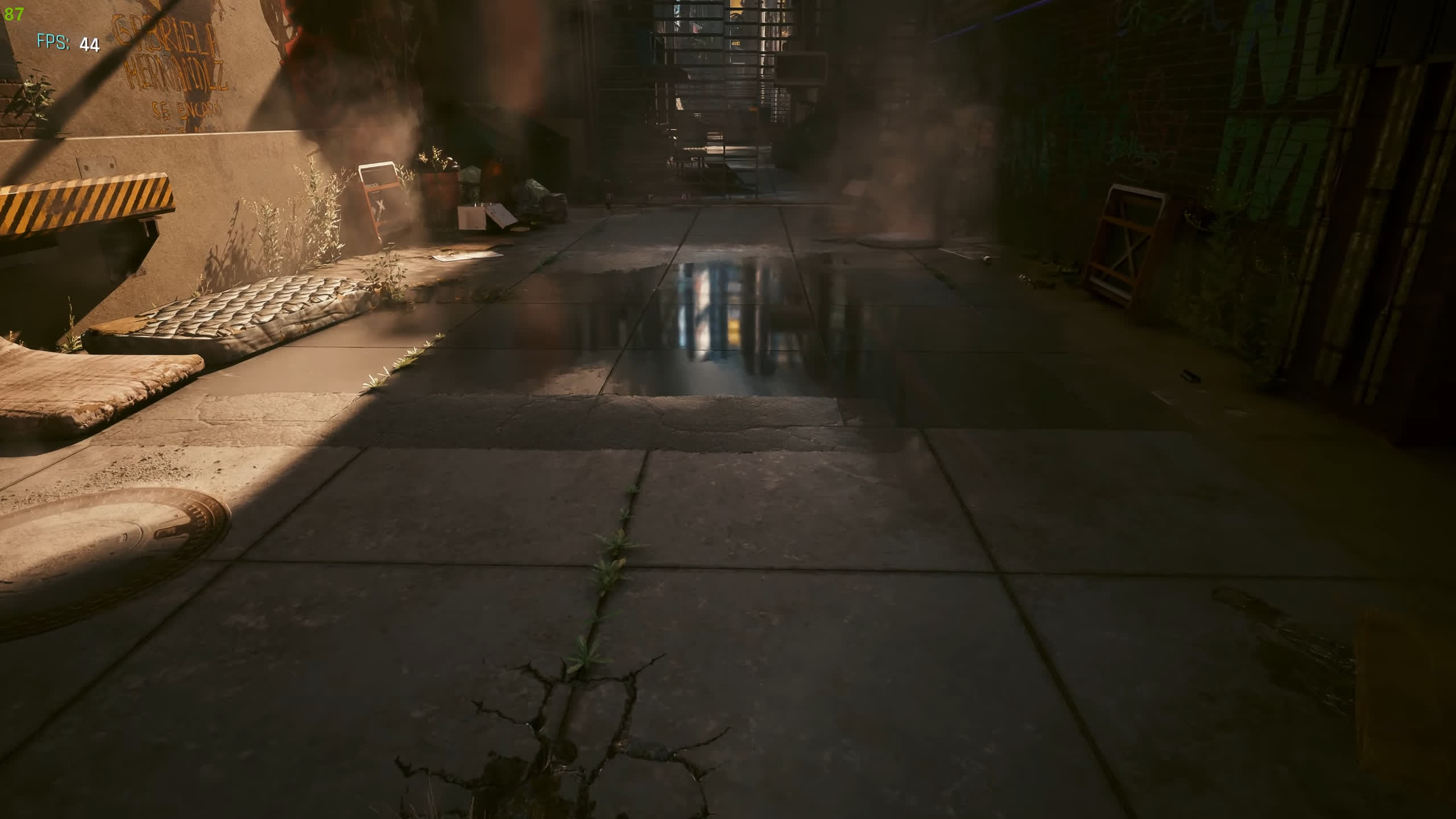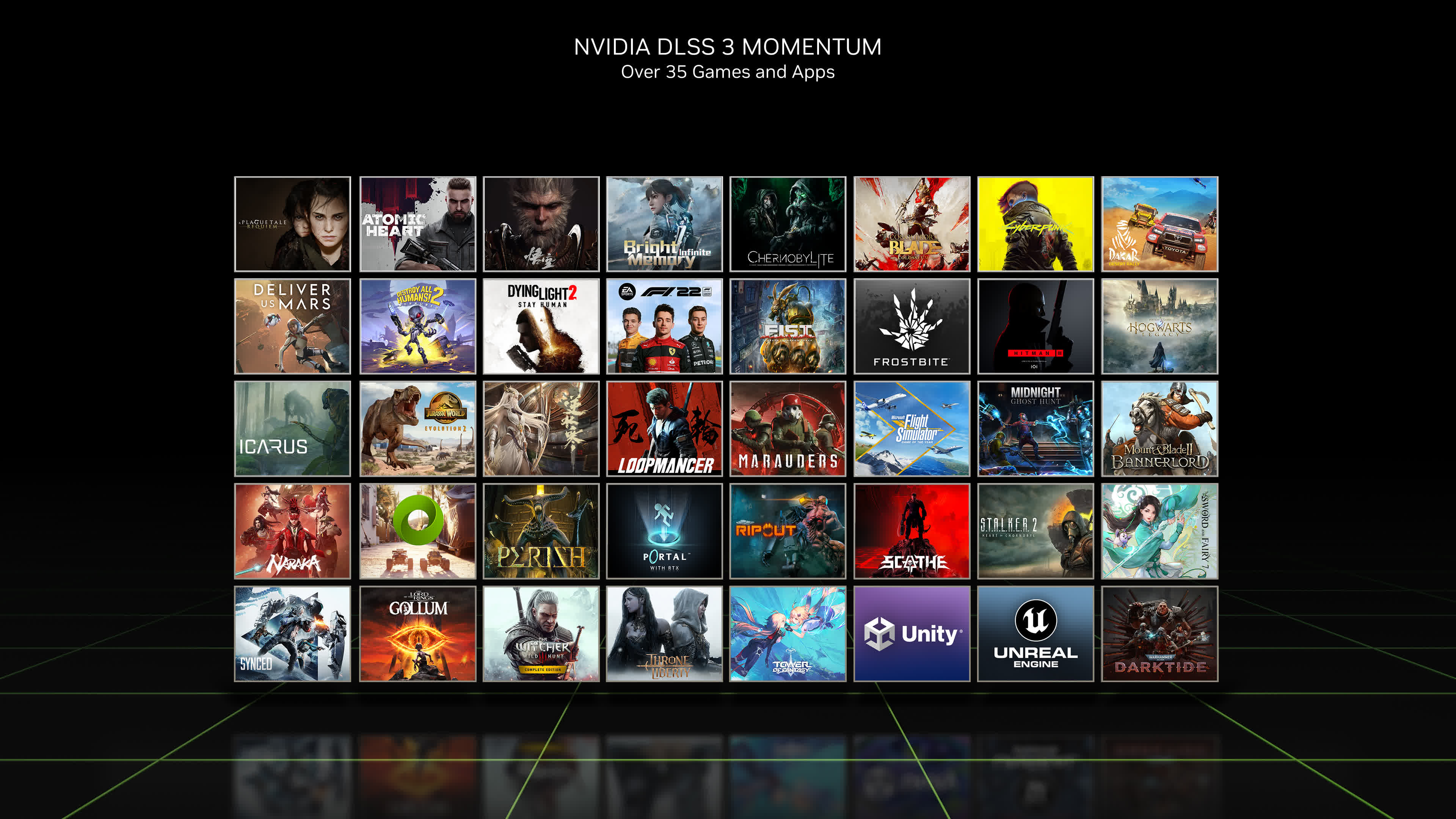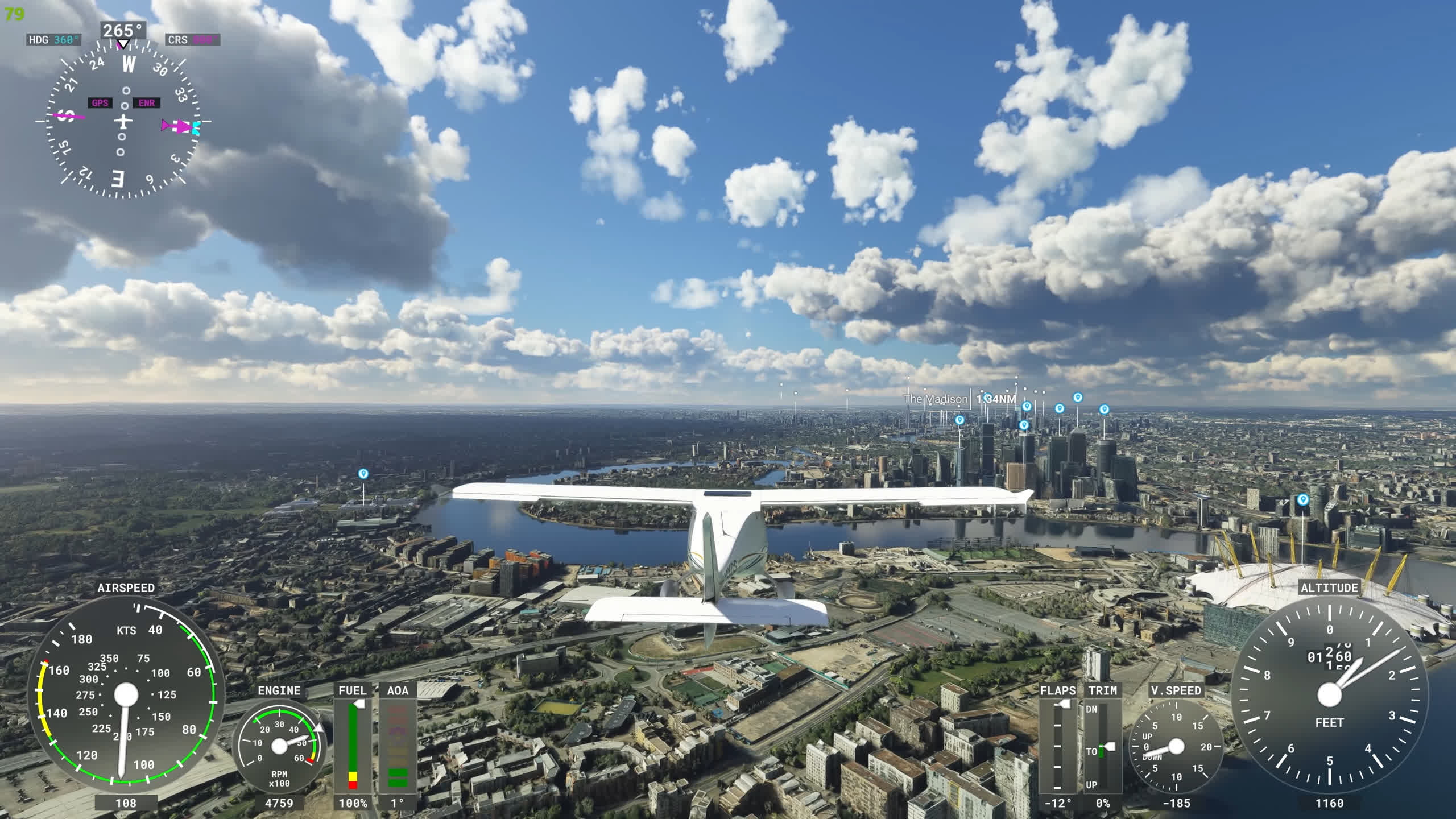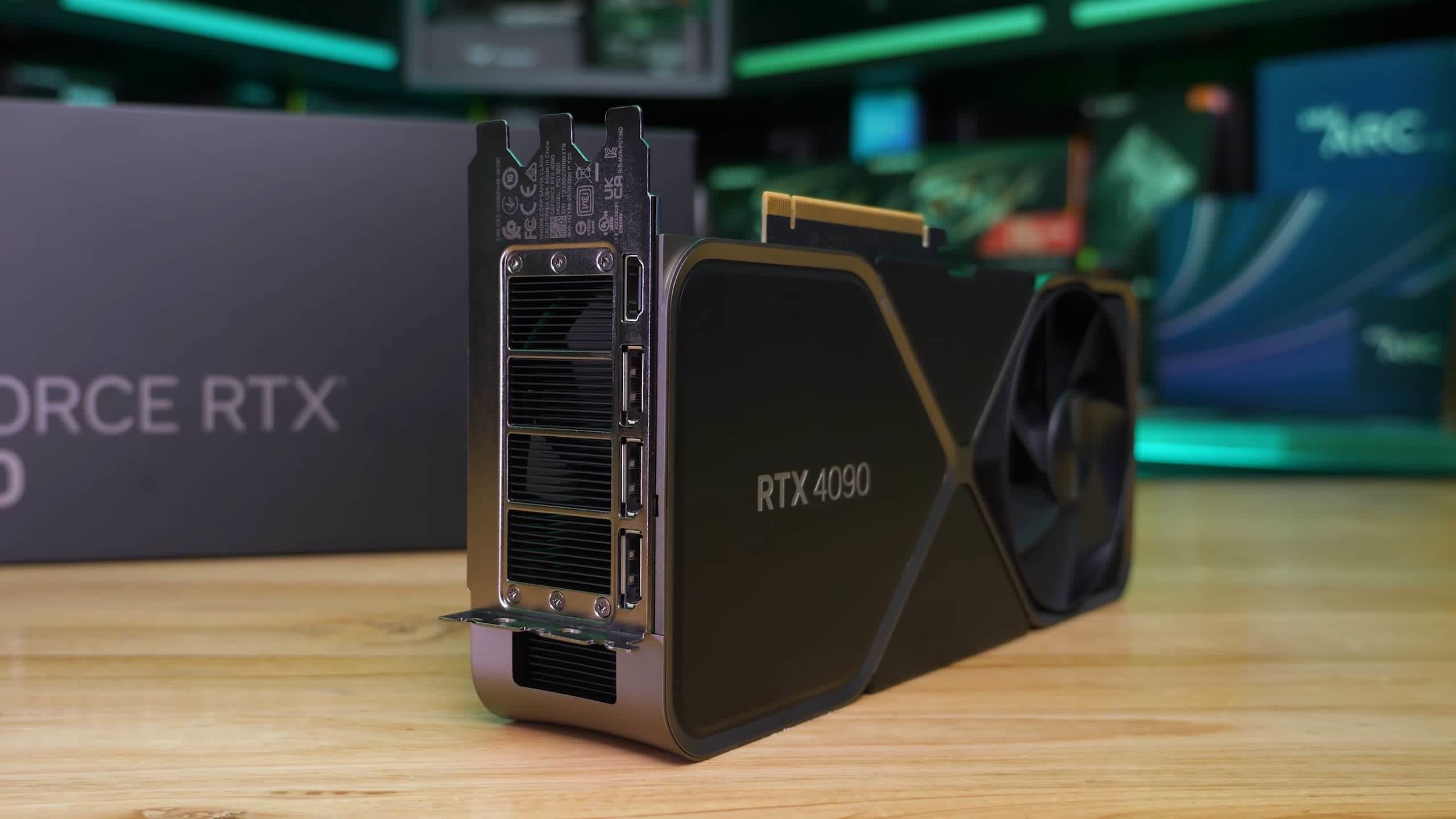Earlier this week we published a big benchmark review covering the new Nvidia GeForce RTX 4090 and damn is this a mighty impressive GPU. We didn't get into much detail on DLSS 3 though, one of the new key selling points of Nvidia's Ada Lovelace generation.
Nvidia is making some pretty bold claims around DLSS 3, including its supposed ability to triple or even quadruple performance with the RTX 4090 relative to older Ampere graphics cards. On the flip side, we've seen DLSS 3 being described as a "fake frame generator" or some variation of that. The thinking being that DLSS 3 doesn't actually generate what we would typically class as a "frame" while gaming, or at least a real frame. We'll explore both sides to that story to see exactly where this new technology sits and whether it's a true selling point for Nvidia's RTX 40 series.
But first, what is DLSS 3?
By now most GPU owners should be familiar with DLSS, an upscaling technique that renders a game at a lower resolution then upscales to a higher resolution using temporal information, motion vectors, and an AI super resolution model. DLSS 2.0 is an excellent technology for gamers in that in delivers more performance than native resolution gaming with only a minor hit to visual quality – especially using the highest quality presets.
DLSS 3 takes this idea one step further by generating entirely new frames to slot between traditionally rendered frames. With DLSS 2, at least some portion of each frame shown was actually rendered by the game engine in some capacity, but with DLSS 3, Nvidia GPUs have gained the ability to create frames without any traditional rendering taking place.
This is achieved through the combination of motion vectors, which show where and how elements on screen are moving between frames; and optical flow, a technique used to blend and interpolate between two images. The resulting generated frames are essentially an estimation of what DLSS 3 thinks the game would have rendered between each real frame.
The "performance" benefits of DLSS 3 - and we need to be careful using the term "performance" with this feature as we'll talk about later - come from the GPU being able to run at full power to render normal frames, with the DLSS 3 algorithm generating more at a small performance overhead. This is why Nvidia claims big frame rate boosts using the technology.
But "generating frames" throws up a lot of questions. What is the visual quality like of each frame that's being fully generated by an algorithm? If DLSS 3 is generating frames between each normal frame, how does this impact latency? What are the limitations of using this technology? We'll answer those questions in this article.
Where DLSS 3 Works Well
Before diving into some visual comparisons, we wanted to touch on the challenges of testing DLSS 3 right now. Currently we only have access to the flagship RTX 4090. DLSS 3 is exclusive to new RTX 40 series GPUs, which means that often DLSS 3 will push frame rates well into the hundreds – way more than 60 FPS video we can upload and embed on YouTube as shown below.
This presents an immediate issue of how do you show the visual quality of DLSS 3 when showing 120 FPS+ gameplay at 60 FPS – will we see many frames cut from the footage? What if those frames being cut are the generated frames, then effectively you aren't actually seeing what DLSS 3 is doing to visuals? This is something that is going to be an issue across all captures of DLSS 3 gameplay, which is why we think you need to be wary of simple 60 FPS reposts of DLSS 3 footage.
So how are we approaching this? Well in today's feature you're going to see a mixture of techniques to illustrate what DLSS 3 looks like in motion. At times we'll be playing high frame rate footage straight back at 60 FPS, but at other times we will be slowing the footage down to highlight certain areas of the visuals – but only in situations where what we are showing is visible in real time, and we'll discuss that as we go.
For a better representation of image quality comparisons, check out the Hardware Unboxed video below:
We're also going to limit DLSS 3 to a much lower frame rate at times using a few tricks, so we can see how the algorithm fares on theoretical future GPUs that aren't nearly as fast as the 4090.
It's also difficult to capture 4K 120 FPS gameplay as today's capture cards don't support this, and we typically rely on external captures for these sorts of videos. However, for DLSS 3 we're almost forced into using local capture using NVENC to get footage at a high frame rate, which is what we've done.
Our test system is using the RTX 4090 Founders Edition, paired with a Ryzen 9 5950X and 32GB of DDR4-3200 memory. There are a number of resources Nvidia provided to look at DLSS 3 but we're sticking to real-world game examples, primarily of three games: Cyberpunk 2077, Microsoft Flight Simulator and F1 22.
The implementation of DLSS 3 across these games is quite janky in the pre-release beta versions we were provided, but each developer promises the issues will be ironed out by launch, and in some instances we believe it could be several weeks until the DLSS 3 patch for the game goes live.
Before trying to break DLSS 3 with tricky test conditions we wanted to show the typical gaming experience that you'll see reasonably often. Here's Cyberpunk 2077 with DLSS Quality mode on one side, and DLSS Quality mode plus Frame Generation, a.k.a. DLSS 3, on the other side.
When driving along this highway in a predictable, standard fashion as you would in a game, there's not a huge difference between each image. Both sides here are running at about 100 FPS, so we can do a direct image quality comparison. Whether you're playing the game or watching this footage in real time it's quite hard to spot the differences at 4K, which is good news for DLSS 3's frame generation technology.
Click on the video to jump to the scene described on this section.

On closer inspection, as expected, the DLSS 3 image is more prone to artifacts, and generally has a slightly softer and blurrier look overall - more akin to DLSS 2's Performance mode than Quality mode. The most common issue with DLSS 3 in motion is slight sizzling and flickering of moving objects. One frame, the normally rendered frame, will be of high quality; the next frame will be a generated frame with unstable edges, ghosting and issues. However at high frame rates this can be pretty hard to spot.
We were playing back footage at real time, but how about half rate, roughly 50 FPS? Can you spot the issues? What about now at 25% playback speed? No? What about 12.5% speed? It's easier to spot the artifacts every second frame now, but when we're talking about ~100 FPS footage each of these dodgy frames is only being shown for 10ms with good quality frames in between.
When only small portions of the screen have issues, gameplay is relatively consistent with only small to moderate changes in each frame, this sizzling and artifacting is masked to some degree.
Click on the video to jump to the scene described on this section.
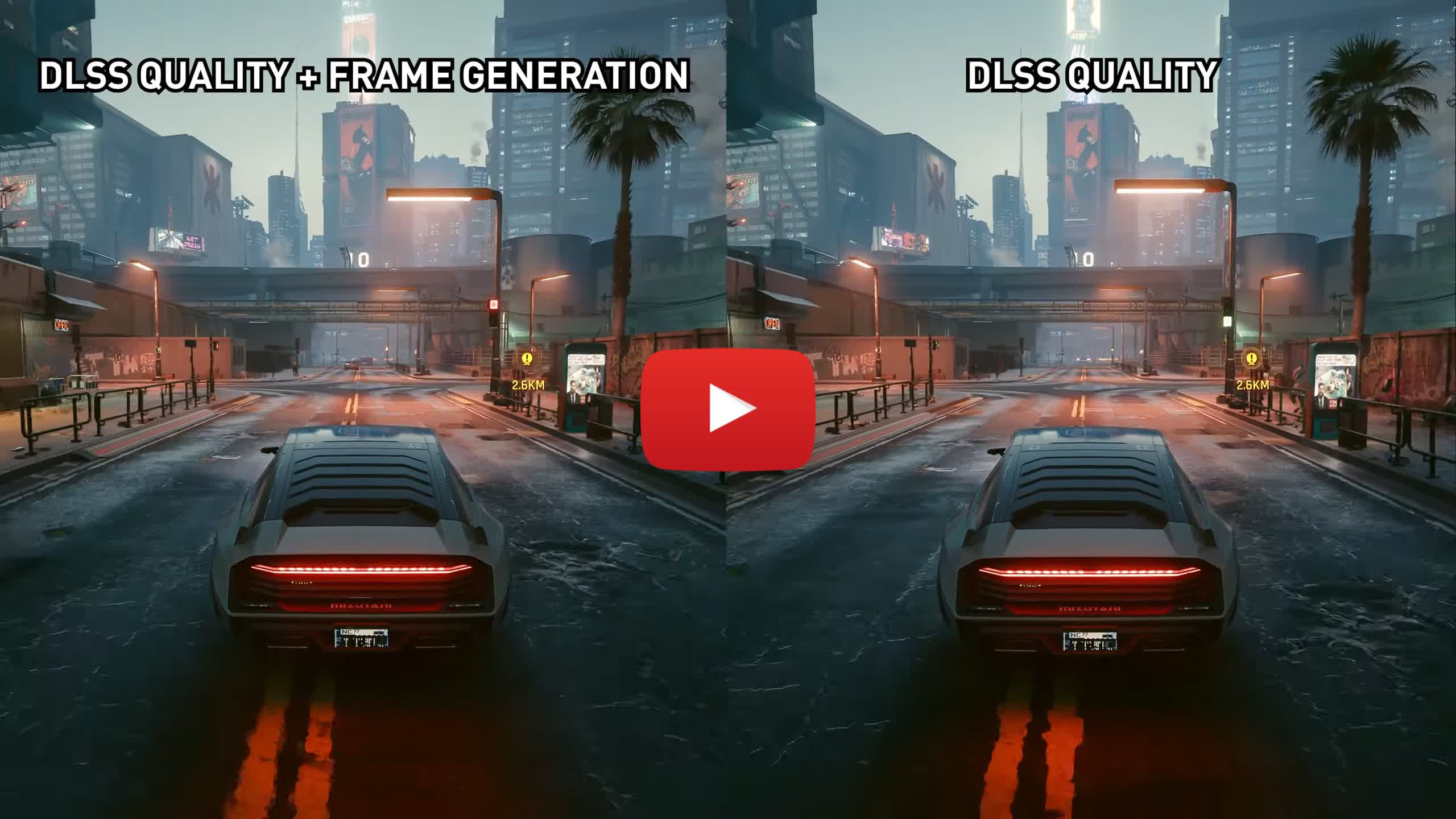
Let's show another example in Cyberpunk 2077. In this scene we spotted a fair bit of ghosting with each image, but that was present regardless of whether DLSS 3 was used or not - it's an issue with DLSS 2's reconstruction. In this scene we're not equalizing frame rate, so the DLSS Quality side is running at about 50-60 FPS while the DLSS 3 image is at about 80 to 90 FPS.
When we focus our attention on the street lights and overhead power wires, both sides have their share of issues with image stability. But in this scene even looking at real time footage the DLSS 3 image is clearly less stable in motion with more artifacts and more flickering. It's only for some areas of the screen though, it's not like the entire presentation turns terrible with frame generation enabled, it's only parts of the screen which you may find hard to notice depending on how sensitive you are to these issues.
When slowing down the footage it does become more apparent which frames are the normally rendered frames and which are the generated frames - and it's apparent here with a less aggressive slowdown because the frame rate is lower. Previously, when looking at 100+ FPS footage, each generated frame was being shown for less than 10ms. But with this 80 FPS footage we're up to 12.5ms per frame, which doesn't sound like a big difference, but does impact the visibility of artifacts.
Click on the video to jump to the scene described on this section.

Another example, this time F1 22 captured at 120 FPS for both DLSS Quality and DLSS Quality + Frame Generation, slowed down to 60 FPS, so we're not discarding every second frame. Even under these slow motion conditions, when just playing the game under regular race circumstances it's pretty hard to tell the difference between frame generation on or off.
At this sort of frame rate, each generated frame is only on screen for 8ms or thereabouts, interlaced with higher quality frames. In real time or even half rate playback the DLSS 3 image looks pretty good with only a small drop to image quality visible at times.
Click on the video to jump to the scene described on this section.

Next example is Flight Simulator, and we're inside the cockpit of an aircraft here, lots of fine details, small knobs, bigger knobs, even a few large shafts to look at. When moving the camera around the cockpit as you would playing the game, DLSS 3 handled this pretty well with a final frame rate of around 120 FPS.
I wasn't able to notice the artifacts in practice, so while there is a small quality difference between DLAA and DLSS frame generation, in this sort of very slow paced simulator game and even when moving the camera around like this, it wasn't much of an issue for DLSS 3.
Even landing planes using an external view there's not much motion here, each frame is relatively consistent - ideal conditions for DLSS 3 and this is the majority of the game, so it holds up really well. You'll have to excuse our flying as I'm an absolutely atrocious pilot using keyboard and mouse controls.
So when talking about DLSS 3's image quality and best case scenarios, there were a few common themes. If the final frame rate of the scene is above about 100 to 120 FPS, each generated frame is only shown on screen for a short time, making artifacts hard to spot. The higher the frame rate, the less noticeable artifacts are, with more real rendered frames interlaced into the presentation.
DLSS 3 also benefits from consistency and a lack of motion. Slower paced games like Flight Simulator are a great use case, but even driving around in Cyberpunk provided what you're doing is pretty standard, consistent type stuff then the frame generation and particularly the optical flow algorithm doesn't have to all that much. While DLSS 3 typically doesn't look as good as DLSS 2's Quality or even Performance modes, if these conditions are met the image quality is definitely usable on many occasions.
Where DLSS 3 Struggles
However, and this is a BIG however, there were several instances where we were able to really expose the flaws with DLSS 3 and this was much easier to spot than with DLSS 2.
DLSS 2 does have its share of problems in motion, we've talked about ghosting, aliasing, and flickering in the past, but usually you'd have to be zooming-in footage and viewing fine detail to spot the changes. At times, DLSS 2 is also capable of improving image quality relative to weak native presentations using crappy TAA, and with a performance benefit as well.
With DLSS 3 there are no situations where I would describe the image as better than native, and when you see artifacts with frame generation enabled, they are more noticeable than with DLSS 2's fine detail issues.
Click on the video to jump to the scene described on this section.

The biggest and most noticeable problems with DLSS 3 concern the UI or UI elements within a game. Frame generation attempts to reconstruct the entire image, and this appears to include the UI. With lots of text, vector-type images, or big uniform areas of color, UI issues are very noticeable, much more than with regular in-game scenes like roads or leaves.
Take Flight Simulator as an example. While moving around the cockpit it looks just fine for the actual cockpit elements, the UI text showing a waypoint is completely garbled when frame generation is used. There is a lot of flickering and instability with this as we pan the camera, and it doesn't even take rapid movements to expose the flaw. We were able to spot this with the frame rate around 120 FPS, so even though each generated image is being shown on screen for a relatively short period, this constant flickering was distracting and looked horrible. When slowing the footage down you can clearly spot which frames are real and which are generated, with the generated frames not having much idea of what to do in reconstructing the UI.
This is also the case in F1 22 at any frame rate. Above each competitor you'll see the names and place of that driver but during standard motion in a race these labels can easily get garbled as frame generation struggles to figure out what to do with these elements. It seems clear that the UI should be rendered into the image after frame generation is applied, but whether this is possible given how DLSS 3 works, we can't be sure.
The second issue is when you change camera perspectives or angles within a game. For a brief moment DLSS 3 doesn't know how to handle the image and what you end up with is a terrible frame on screen for a split second. This is how F1 22 handles that transition, you get this big blurry mess as frame generation tries to interpolate between two very different frames. It can be hard to notice this at high frame rates, but it's questionable as to whether showing this frame has any benefit whatsoever when it doesn't really look like a real frame.
And this crops up across many scenarios. If you stop and scrutinize the frames that DLSS 3 actually generates, it's not a pretty picture. Huge areas of blur, elements being blended together, repeated sections of frames, low detail level. Obviously, this is an unrealistic situation because in a game you're not stopping to view each individual frame, but the goal with DLSS 3 is to basically hide these frames between the real rendered frames and fake its way up to a higher level of smoothness.
Provided the frame rate is high enough and each of these dodgy generated frames is shown only for a short enough time, you'll probably not notice what is going on - and that's true! It can genuinely be hard to spot all of these issues that can appear so glaring when you view the individual generated frames.
But there are situations where you can only do so much to hide the flaws. The big problem with DLSS in this sense is when you are using frame generation at a low frame rate, which may be the case on future, lower-end RTX 40 series GPUs. We power limited the RTX 4090 to simulate a much slower GPU that may only be capable of rendering games with DLSS 2 enabled at around 30-40 FPS with heavy ray tracing effects enabled. Then when turning on DLSS 3 frame generation we can try and get this frame rate more up in the 60 to 70 FPS range - this is very likely to be something that users may consider with a card like an RTX 4050 or RTX 4060.
Click on the video to jump to the scene described on this section.

The problem with using DLSS 3 at a final frame rate of ~60 FPS is that it no longer hides the artifacts. Here we have Flight Simulator running at just above 60 FPS with frame generation enabled. When panning around this Airbus A320 from the exterior you can easily see instability around the edges of the aircraft, particularly the vertical stabilizer on the rear. These artifacts flicker noticeably and almost look like there's an issue with display corruption - that's DLSS 3.
In Cyberpunk 2077 we tried the same, running around 60 FPS with frame generation on, and you can see sizzling and artifacting around some on screen elements in motion. It's more noticeable at slower playback speeds, but is still visible in real time, and contrasts to the DLSS 2 image which doesn't have these issues at the same frame rate.
This makes DLSS 3 unsuitable/unusable as a tool to target 60 FPS if your GPU isn't powerful enough to render at this frame rate natively. In fact, you'll likely see issues with the presentation at any target frame rate below 100 to 120 FPS based on our experience with the technology so far.
This means the GPU must be capable of rendering at least with DLSS 2 enabled somewhere in the 60 to 80 FPS range before enabling DLSS 3, and to avoid UI artifacts you'll need to aim higher, even a baseline of say 100-120 FPS with a final frame rate near 200 FPS. It's abundantly clear that DLSS 3 only shines from a visual standpoint at high frame rates.
Input Latency
DLSS 3 frame generation also increases input latency, even if it increases the frame rate. What this creates is a weird situation where frame rate increases, but latency increases as well - usually when gaming, higher frame rates lead to lower latency, and therefore a more responsive experience.
But this isn't the case with DLSS 3, which means that at times enabling DLSS 3 can make a game feel more sluggish even if the frame rate has risen, a weird feeling for sure.
We tested this in Cyberpunk 2077, with latency numbers measured as click to photon latency using Nvidia's LDAT tool, which allows us to record the total latency from when you click to when you see the action appear on screen - this is the most accurate way to test latency and gives the most real world results.
The results are very interesting. When enabling DLSS Quality mode, we see what normally happens when frame rates increase. In the area we tested, scene FPS rose from 42 to 72 FPS, and that came with a decrease in latency from 64 to 47 ms. The game feels faster as you'd expect.
But when enabling frame generation, while scene FPS rose again to 112 FPS, latency increased to 63 ms. What this means is that despite the game having the visual smoothness of 112 FPS, the latency and responsiveness you're experiencing is more like playing the game at 40 FPS. You end up with smooth motion but a slow feel, which is hard to show on a video.
In contrast, if we use DLSS Performance mode to raise performance further instead, we end up running at a lesser frame rate but with noticeably better latency and this plays out as a more responsive gaming experience. Enabling frame generation sees latency rise as well, but at least latency is now lower than native rendering.
The reason why we're seeing these results and why there's a stark discrepancy to Nvidia's own numbers is that we tested DLSS 2 and native performance with Reflex enabled. After all, if Reflex is available, why would you disable it?
It also equalizes the playing field between DLSS3 - which forces Reflex on - and the other rendering methods. So with frame generation as the only variable, we clearly produce higher latency. But when compared to the Reflex off numbers, suddenly frame generation looks pretty good, we go from 102ms at native rendering, to 63ms with DLSS 3 - it's just that no one would consider playing with Reflex off, so it's an unrealistic test condition.
This holds true for the other games we tested. In Microsoft Flight Simulator we measured the latency of changing cameras from the cockpit to exterior camera. The game is heavily CPU limited, so there's no difference in performance between native TAA and DLSS, and only a slight improvement to latency using DLSS.
But when enabling frame generation we see an increase in latency, so despite running at double the frame rate, latency is higher by over 10ms. This means responsiveness has gone backwards and is actually worse than running natively. Luckily, in a game like Flight Simulator, latency is not a problem and the game is playable with DLSS 3 on.
In F1 22 we saw the same behavior. Testing the latency of a camera angle change, going from native TAA to DLSS Quality saw a huge uplift in performance and a corresponding decrease in latency - which is what we're used to seeing.
But enabling frame generation, improved performance by nearly 40 FPS, but it also increased latency by 11ms. In other words, while the game is running at 170 FPS, you're getting the latency and responsiveness as if the game was being rendered at 100 FPS.
In this game we can also compare the latency of DLSS Performance mode to DLSS Quality + Frame Generation, which both ran at roughly the same frame rate. Despite this, using DLSS 3 saw almost 20ms of additional latency added which is quite noticeable. From this perspective, you'd clearly prefer to use DLSS Performance mode over DLSS Frame Generation, as not only does Performance mode look better, it delivers the same frame rate at lower latency. Even using Frame Generation with DLSS Performance mode we can't reach the latency of just running with DLSS Quality mode.
So while the visual quality of DLSS 3 may be acceptable in some situations, the latency cost is hard to swallow and the resulting experience depends significantly on what level of performance you're coming from. At a target frame rate of 60 FPS, DLSS 3 provides latency similar to running the game at 30 FPS, which feels terrible and made titles such as Cyberpunk 2077 feel slow and laggy. I have serious question marks over the viability of DLSS 3 for lower end, less powerful GPUs as a result.
Even gaming with DLSS 3 pumping out 120 FPS, in real world latency terms the game felt more like it was being ran at 60 FPS or even less than 60 FPS at times. I'm not the most latency sensitive gamer, but even I was able to tell the difference.
I tested 120 FPS with frame generation, 120 FPS without frame generation, and 60 FPS without frame generation and the DLSS 3 frame generation results were most like the 60 FPS normal rendering results - which isn't a huge surprise as the latency numbers suggest this would be the case.
It was honestly a weird experience playing a game where the smoothness is clearly high, but the game still feels slow, it's not something you typically experience unless there's something wrong with the game engine and how it handles inputs.
Based on this it's hard to recommend anyone use DLSS 3 at moderate to low frame rates. To avoid any latency issues and effectively playing the game at a lower performance level than you started with, you need a high baseline FPS before enabling frame generation. We would recommend a minimum of 120 FPS before DLSS 3, targeting around 200 FPS with frame generation enabled. In this configuration you'll probably see latency equivalent to playing in the 100-120 FPS range, but with a higher level of smoothness, which we feel is acceptable for single-player titles where latency isn't a huge factor.
This also means DLSS 3 is useless for competitive gamers. The key reason you want high frame rates in competitive titles such as Fortnite, Overwatch, CS GO and similar games is to reduce input latency, which makes it easier to track and kill enemies. DLSS 3 hurts input latency despite the apparent gain to FPS, so it's not ideal for those titles. You're better off turning down quality settings or using DLSS 2. With the RTX 4090, the performance level is so high in competitive titles there's no point of considering DLSS 3 anyway.
Other Important Aspects and Implications
It's also pointless to use DLSS 3 when the frame rate exceeds your monitor's maximum refresh rate. With normal rendering, you can see some benefit running at a higher frame rate than your maximum refresh rate because higher FPS will continue to give you latency benefits. DLSS 3 though doesn't provide that same latency advantage because higher FPS does not come hand in hand with better latency. In effect, using DLSS 3 above your maximum refresh rate is doing nothing - it's just producing frames you might not fully see, at no benefit to latency, with the potential for tearing.
With the recommendations we've outlined so far this makes DLSS 3 most useful for those with high refresh rate 240 Hz monitors or greater. If you can start with around 120 FPS gameplay and use DLSS 3 to boost that up to near the maximum refresh of your display, you'll get a smoother experience with less sample and hold blur. In other situations, either at a lower frame rate or with monitors of a lower refresh rate, the benefits to DLSS 3 are less relevant.
The final issue to DLSS 3 is it doesn't support frame caps or V-Sync. Therefore it's crucial to run DLSS 3 on an adaptive sync display, otherwise you will see ugly tearing as DLSS 3 forces a V-Sync off state. You also can't cap or limit what DLSS 3 produces, so a high refresh monitor is required, otherwise you'll run above the maximum refresh and tearing will also reoccur. We hope this is something Nvidia can address in a future revision of DLSS 3 because as it stands for many gamers features like frame caps and V-Sync are essential.
There's also the implications of describing what DLSS 3 provides as an "increase to performance." Across GPU history, up until this point, when we talked about one product producing higher FPS than another, that's directly leading to two benefits: smoother visuals and lower latency for more responsive gameplay. The two have always gone hand in hand.

DLSS 3 only provides one of the two benefits to higher FPS. It does improve smoothness, but it doesn't improve latency. If you're only getting half of the usual benefit from higher FPS, is it fair to say that has improved performance in the same way as other methods?
We would argue that isn't fair, and that DLSS 3 frames per second are categorically not equivalent or comparable to non-DLSS 3 frames per second, even without factoring in visual differences. They're almost measuring different things. That's why in this article we've steered clear of any discussion of raw FPS improvements comparing DLSS 3 on and off and to other techniques.
When you add to the mix the visual discrepancies and what DLSS 3 actually generates in many instances, it becomes even harder to compare. At this point it's clear that a game running at 120 FPS without DLSS 3 frame generation, and one at 120 FPS with DLSS 3, are not equivalent visually.
Of course, this was also true for DLSS 2, FSR, and other upscaling technologies, but the discrepancy in image quality is perhaps largest when comparing generated frames to real frames with DLSS 3. This makes any benchmark chart showing DLSS 3 vs non-DLSS 3 rendering highly dubious or even misleading. Nvidia loves to make those comparisons, but we just don't think they are truly apples-to-apples. That's not to say DLSS 3 has no benefits, it's just that it can't and shouldn't be compared in this way.
What We Learned: Hot or Not?
After testing DLSS 3 for the past week or two we're coming away with mixed feelings. We don't think DLSS 3 is the disaster that DLSS 1.0 was, but it's clear that DLSS 3 is providing a narrower set of improvements than DLSS 2.0, which is a more versatile technology that delivers benefits to nearly all GeForce RTX owners. DLSS 3 has a more limited set of use cases where gamers will benefit, making it more niche than the excellent DLSS 2.0.
In short, DLSS 3 will be of benefit to you provided you meet a few criteria:
- Before enabling frame generation, you need to already be rendering the game at a decent frame rate, in the 100-120 FPS range.
- You'll need to have a high refresh rate display, ideally 240 Hz or higher.
- You'll need to be playing a game that is slower paced and not latency sensitive, like a single-player title.
If all of these factors are combined and you have the right set of conditions, DLSS 3 can improve the visual smoothness of gameplay, and while the quality of generated frames is typically less than that of traditionally rendered frames, the way they are interlaced into the output makes artifacts hard to notice.
We think it's best to think of DLSS 3 as a toggle for high refresh rate gamers to get closer to maxing out their display; turn it on, and in many cases you can take that 120 FPS level of performance and get near 200 FPS effortlessly, leading to better smoothness - after all, monitors perform best when run at as high of a refresh rate as possible, with the most frames being fed to it.
This is a decent step towards making 500Hz and 1000Hz displays of the future viable. Rendering at those sorts of frame rates is probably never going to be achievable with the advancements in games, but there is a visual benefit from running at such a high refresh rate. Frame interpolation like DLSS 3 is one technology that could give us that benefit without requiring ridiculous levels of GPU processing hardware.
DLSS 3 was a real joy to use in Microsoft Flight Simulator most of the time and we suspect you'll find the same in other games that are not latency sensitive or are CPU limited. As DLSS 3 simply generates its own frames without game engine input, it can avoid the CPU bottleneck and deliver a smoother experience.
However, there are limitations to DLSS 3. The biggest is that it hurts latency when enabled. This means that while frame rates go up, the game doesn't feel more responsive, and in a worst case scenario, will feel sluggish because of DLSS 3. A game run with DLSS 3 at 60 FPS feels like a 30 FPS game in its responsiveness, which is not great and makes the technology unsuitable for transforming slower GPUs into 60 FPS performers.
You get a similar issue with DLSS 3 at 120 FPS feeling more like 60 FPS despite having the visual clarity of 120 FPS - this is why we suggest users target rendering at 120 FPS before enabling the technology, because at this frame rate you're getting a pretty good level of baseline latency and any impact from DLSS 3 will be minimal, especially for a single-player title.
DLSS 3 also has some visual issues which are most noticeable at frame rates below 120 FPS. The technology does not handle UI elements well, and fast motion can cause flickering, sizzling, blur or ghosting. The lower the final frame rate, the more noticeable these issues will be. Not only does DLSS 3 feel slow at 60 FPS, it also suffers from noticeable artifacts. In general, the visual quality is lower than that of DLSS 2.0 Performance mode, so if you already find that mode unsatisfactory, you won't get a lot out of DLSS 3.
Because DLSS 3 provides no latency benefit, there's no reason to run it above your monitor's maximum refresh rate. This is why we strongly recommend a 240Hz display or greater with adaptive sync support. There's also no way to cap DLSS 3 inside the maximum refresh rate.
All of this brings us to the major question: is DLSS 3 a key selling point for RTX 40 series GPUs?
Because its use cases are more constrained, we don't think it's as much of a selling point as DLSS 2.0. On a powerful GPU like the RTX 4090 there are many cases where you don't need DLSS 3 at all because frame rates are already so high, and we have question marks over how useful it will be on entry-level products, like an "RTX 4050" if that ever comes to market.
We didn't touch on DLSS 3 at lower resolutions in this video, but we briefly tested at 1080p and 1440p and found all the limitations from the 4K presentation also apply there.
The sweet spot where buyers will benefit the most will be around RTX 4070 levels of performance, where good frame rates are achievable and DLSS 3 can provide a boost into the 200 FPS range. But we don't think it's a must-have feature, nor would we pay a premium to access DLSS 3.
The main benefit of upgrading to Ada Lovelace is its higher performance, especially for ray tracing. DLSS 3 is a nice bonus and adds to the strong feature set of Nvidia GPUs that include DLSS 2, NVENC and Reflex - together those things are hard to beat.
To make DLSS 3 a killer feature Nvidia needs to work hard on several areas. Reducing visual artifacts in generated frames will help the experience at more modest frame rates, especially if the algorithm can be improved to handle UI elements better. Adding support for Vsync and frame limits is also essential. However, we're uncertain if the main issue of latency can ever be solved given DLSS 3 fundamentally needs access to a future frame to slot in its generated frame. If Nvidia can somehow fix latency that would be amazing and elevate DLSS 3 to killer feature status, but we wouldn't hold our breath for that to happen.
